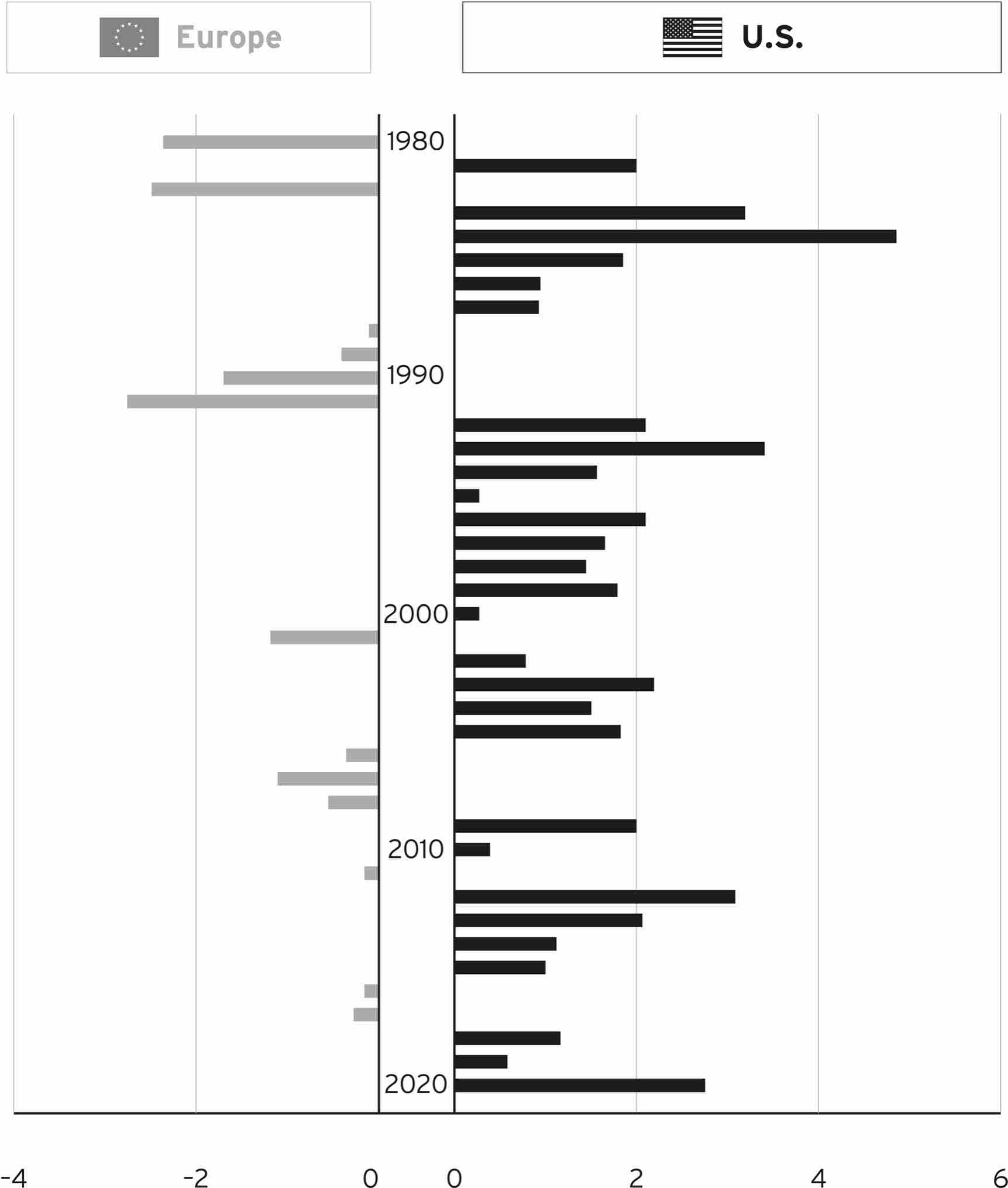Smothered by the Safety Net
Social spending can protect the vulnerable from the sharp edges of capitalism, and it lifts us all by building a more just society. That’s the argument, anyway. The downside is that it can mire the government in debt, create ineffective administrative zombies that are insulated from market forces, and worst of all, snuff out the spark of innovation. The European commitment to social spending can’t be ignored when considering that between 1980 and 2020, the U.S. economy has grown faster than Europe’s in twenty-eight of the past forty-one years.
To be clear, I am not someone who believes that workers are only productive when they fear starvation. That’s immoral and simply wrong. Economic anxiety is like high blood pressure: it’s a drag on energy and effectiveness, not a spur. Only someone who’s never been poor thinks poor people work harder when we take more away from them.
But to work, social spending has to be done effectively, not squandered on bureaucracy. It has to be delivered in the context of a society where mobility remains possible, and where risk is still rewarded.
86
Difference in Annual GDP Growth Rate
U.S. minus Europe

Source: Prof G analysis of World Bank data.